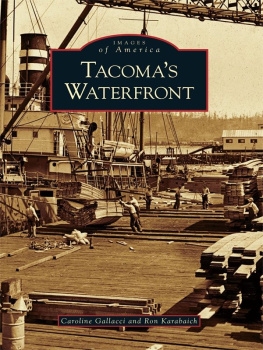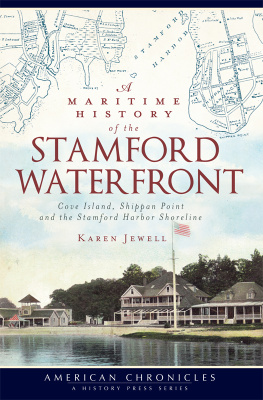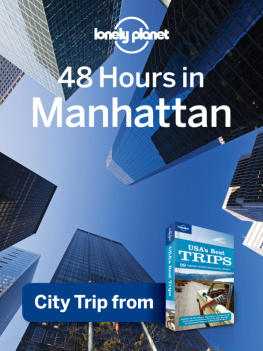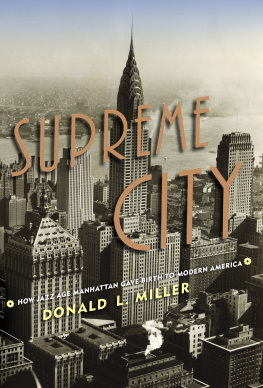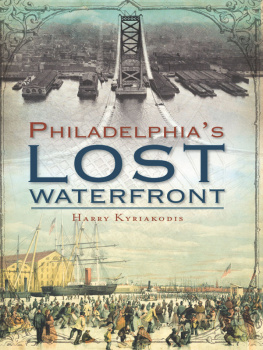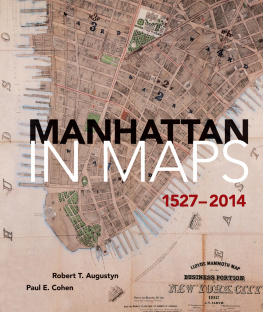WATERFRONT MANHATTAN
KURT C. SCHLICHTING
WATERFRONT MANHATTAN
FROM HENRY HUDSON TO THE HIGH LINE

2018 Johns Hopkins University Press
All rights reserved. Published 2018
Printed in the United States of America on acid-free paper
9 8 7 6 5 4 3 2 1
Johns Hopkins University Press
2715 North Charles Street
Baltimore, Maryland 21218-4363
www.press.jhu.edu
Library of Congress Cataloging-in-Publication Data
Names: Schlichting, Kurt C., author.
Title: Waterfront Manhattan : from Henry Hudson to the high line / Kurt C. Schlichting.
Description: Baltimore : Johns Hopkins University Press, [2018] | Includes bibliographical references and index.
Identifiers: LCCN 2017037462| ISBN 9781421425238 (hardcover : alk. paper) | ISBN 9781421425245 (electronic) | ISBN 1421425238 (hardcover : alk. paper) | ISBN 1421425246 (electronic)
Subjects: LCSH: HarborsNew York (State)New YorkHistory. | New York Harbor (N.Y. and N.J.)History. | Manhattan (New York, N.Y.)Economic conditions. | BISAC: HISTORY / United States / General. | SCIENCE / History. | ARCHITECTURE / Urban & Land Use Planning. | TRANSPORTATION / Ships & Shipbuilding / History.
Classification: LCC HE554.N7 S35 2018 | DDC 387.109747/1dc23 LC record available at https://lccn.loc.gov/2017037462
A catalog record for this book is available from the British Library.
Special discounts are available for bulk purchases of this book. For more information, please contact Special Sales at 410-516-6936 or .
Johns Hopkins University Press uses environmentally friendly book materials, including recycled text paper that is composed of at least 30 percent post-consumer waste, whenever possible.
To Mary with love:
with you all has been possible.
Preface
My engagement with Manhattan dates back to childhood trips from Connecticut to the City with my grandmother or extended family on the old New York, New Haven & Hartford Railroad. Later, in high school and college, the lure of New Yorks energy beckoned. When starting graduate school at New York University in 1970, I moved to the Lower East Side to share a loft on East 10th Street. The methadone clinic across the street drew junkies, who filled the stoops during the day. Street people lived in Tompkins Square, and the squats on the adjacent avenues provided a real-time view of the urban crisis.
June 2017
The citys vibrant Hudson River Park could not have looked more beautiful, filled with thousands of people enjoying the breathtaking views of the Hudson and, across the water, to the brand-new waterfront in Jersey City and Hoboken. Frisbees and balloons filled the air. Upscale parents pushed strollers along the shoreline. Tourists from all over the world joined New Yorkers to enjoy Manhattans reclaimed meeting of land and water.
At Stuyvesant Cove Park, the path winds along the East River, from East 20th Street south to the Williamsburg Bridge and then down to the Battery. Across the East River, gleaming new apartment buildings line the shore in Long Island City and Williamsburg, two city neighborhoods in the midst of a renaissance. Farther to the south, Brooklyn Bridge Park offers spectacular views of Lower Manhattan, crowded with gleaming new office buildings and home to Wall Street, the center of world finance.
In Greenwich Village, luxury buildings on Charles Street cast deep shadows on Charles Lane, the once-infamous Pig Alley where drunks from the longshoremens bars on West Street slept off a bender. Directly across the street in Hudson River Park, where ships from all over the world once tied up, two new rebuilt piers offer space for sunbathers to lounge and catch the gentle breezes. North at the Chelsea piers, people golf and rent sailboats.
June 1971
As usual, some friends and I ended up late at night at the White Horse Tavern on Hudson Street in Greenwich Village, looking for the ghost of Dylan Thomas. I faced the dangerous prospect of walking across town to my apartment on East 10th Street. On the corner of my block, even the prostitutes who worked the fleabag hotel on 2nd Avenue would be afraid to be out. Just two weeks earlier, at about 8:30 p.m., I was in my third-floor loft and heard a loud banging in the hall. My neighbor and I looked down the stairwell and saw three guys with a 44 trying to bang down the door of an apartment on the next floor. We ran into my apartment, bolted the door, and called the police. They arrived in a few minutes and arrested the would-be thieves. We watched as the miscreants were loaded into a squad car, which drove away with the 44 sticking out of the trunk.
Back at the White Horse, John and the other Jersey boys offered me a ride across town before they hit the Holland Tunnel and home. A problem immediately arose. Earlier in the evening, John had parked on West Street, under the elevated highway, and now we faced the prospect of walking three blocks down Perry Street to West Street at 2 a.m. in the morning. We were all terrifiedfive 20-something rugby players fearful to walk through an apocalyptic streetscape in Greenwich Village to the crumbling understructure of the West Side Highway, the abandoned warehouses, and the dilapidated piers along the Hudson River. We survived the journey, and I have lived to marvel at the rebirth of the Manhattan waterfront and the city of New York.
This book views the history of the Manhattan waterfront as a struggle between public and private control of what is New York Citys most priceless asset. From colonial times until after the Civil War, the city ceded control of the waterfront to private interests, for the latter to build a maritime infrastructure. With only finite space available, despite the made-land along the shore, a battle ensued among shipping interests, the railroads, and the ferries for access to the waterfront. The public was excluded from the waterside.
In the second half of the nineteenth century, the city of New York regained control of the waterfront, and Manhattan and the Port of New York remained preeminent until after World War II. A whirlwind of forces beyond the control of either public or private interests followed: crime on the waterfront, the revolution brought about by containerized shipping, the deindustrialization of New York City and its metropolitan region, the changing ethnic and racial makeup of the waterfront neighborhoods, and the ecological vulnerability of the extension of the Manhattan shoreline out into the Hudson and East Rivers. Hurricane Sandy provided a devastating warning of the consequences of global warming.
New York recovered from the depths of darkness in the 1970s, 80s, and 90s. The Manhattan shoreline has been reimagined as a place for the public to enjoy and the affluent to live. A complicated web of public and private initiatives has transformed the waterfront from the center of the citys maritime world to a magnificent setting for leisure and recreation.
My two previous books for Johns Hopkins University Press drew upon archival materials at the New York Public Library, including a treasure trove of historic maps of Manhattan, extending back to the original Dutch settlement. During a visit to the map room with a group of my students from Fairfield University, Matt Knutson, then curator of the Map Division and now head of humanities research, shared a series of historic maps created by New York Citys Department of Docks in the 1870s. The maps detailed the water-lots granted by the city to private owners, who extended Manhattan Island out into the surrounding rivers and then built the piers that were essential to the rise of the Port of New York. Over time, the water-lot grants led to the addition of thousands of acres of made-land, a pivotal part of Manhattans history. As an idea for a book materialized, I realized that more research was needed, which I pursued in the magnificent resources of the New York Public Library.
Next page


